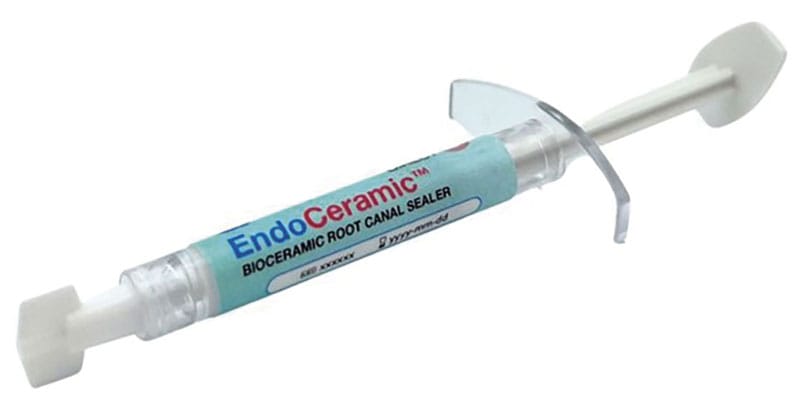EndoCeramic Sealer by Endo Direct brings long-term success, solubility, and dimensional stability to endodontists and has been shown to prevent microleakage and failure of the root canal. Read more about its outstanding results.

Dr. George Just discusses research on a bioceramic sealer from Endo Direct
The American Association of Endodontists’ Guide to Clinical Endodontics outlines the acceptable standards for the nonsurgical treatment of permanent teeth.1
Sealer is a highly important component of successful endodontic treatment. It ensures a hermetic seal thus filling voids in the gutta-percha core material, as well as preventing bacteria from reentering the canal system via the apex and/or lateral canals.
The properties of an ideal sealer are the following:
- Preventing leakage and reinfection of the periapical tissues, and or inflammation of the periapical tissues
- Functioning as an antimicrobial agent, thus destroying microbes that were not eliminated in the cleaning, shaping, and disinfection of the canal system, as well as those that might attempt to leak in over time
- Solubility — an ideal sealer must exhibit low solubility in tissue fluids, thus preventing microleakage and reinfection
- Good dimensional stability
Recent research by Abdoul R. Koroni, DDS, at the University of Maryland School of Dentistry tested these properties in several different sealers. His research compared EndoCeramic® by Endo Direct, EndoSequence® BC Sealer by Brasseler USA, NeoSealer® Flo by AvalonBiomed, and ProRoot® MTA by Dentsply Sirona. His evaluation methods used ISO 6876. All tests were performed in triplicate.
Dr. Koroni’s research evaluated the following properties of endodontic sealers:
- Dimensional stability
- Solubility — ability of the sealer not to dissolve
- Film thickness
- Flowability — the ability of the sealer to spread and fill the canal, thus preventing leakage
- Working time — time it takes the sealer to set, thus allowing time to place the gutta-percha cone and seal the root canal system
Results
- Dimensional Stability: EndoCeramic® by Endo Direct had the least amount of dimensional changes after 30 days (0.48%).
- Solubility: EndoCeramic® by Endo Direct had the lowest rate of solubility at (2.08%)(p>.05).
- Setting time: EndoSequence® had the longest at 1,428.67 minutes, ProRoot MTA the shortest at 251.33 minutes.
- Flowability: All tested sealers were comparable.
- Film thickness: All sealers tested were comparable. The exception was ProRoot MTA (repair material) which was very thick.
Discussion
This research paper demonstrates that EndoCeramic® sealer by Endo Direct exhibits outstanding results when compared to NeoSealer® Flo, EndoSequence® BC Sealer, and ProRoot® MTA. It far surpassed the other sealers in the two most important properties of a sealer for long-term success, solubility, and dimensional stability. Both are of paramount importance in preventing microleakage and failure of the root canal. In all other attributes tested, EndoCeramic® sealer was comparable to the others tested. Dr. Koroni noted: “EndoCeramic® offers superb dimensional stability and low solubility making it ideal for long term treatment applications.”
This information was provided by Endo Direct.
Read more about how Endo Direct provides clinicians with endodontic products of high quality at a low price. https://endopracticeus.com/endo-direct/
- American Association of Endodontists. Guide to Clinical Endodontics. 5th ed. 2015. https://www.aae.org/specialty/clinical-resources/guide-clinical-endodontics/.
Stay Relevant With Endodontic Practice US
Join our email list for CE courses and webinars, articles and more..

 George Just, DDS, is an endodontist practicing in Monroeville, Pennsylvania. He has lectured globally for the past 30 years.
George Just, DDS, is an endodontist practicing in Monroeville, Pennsylvania. He has lectured globally for the past 30 years.